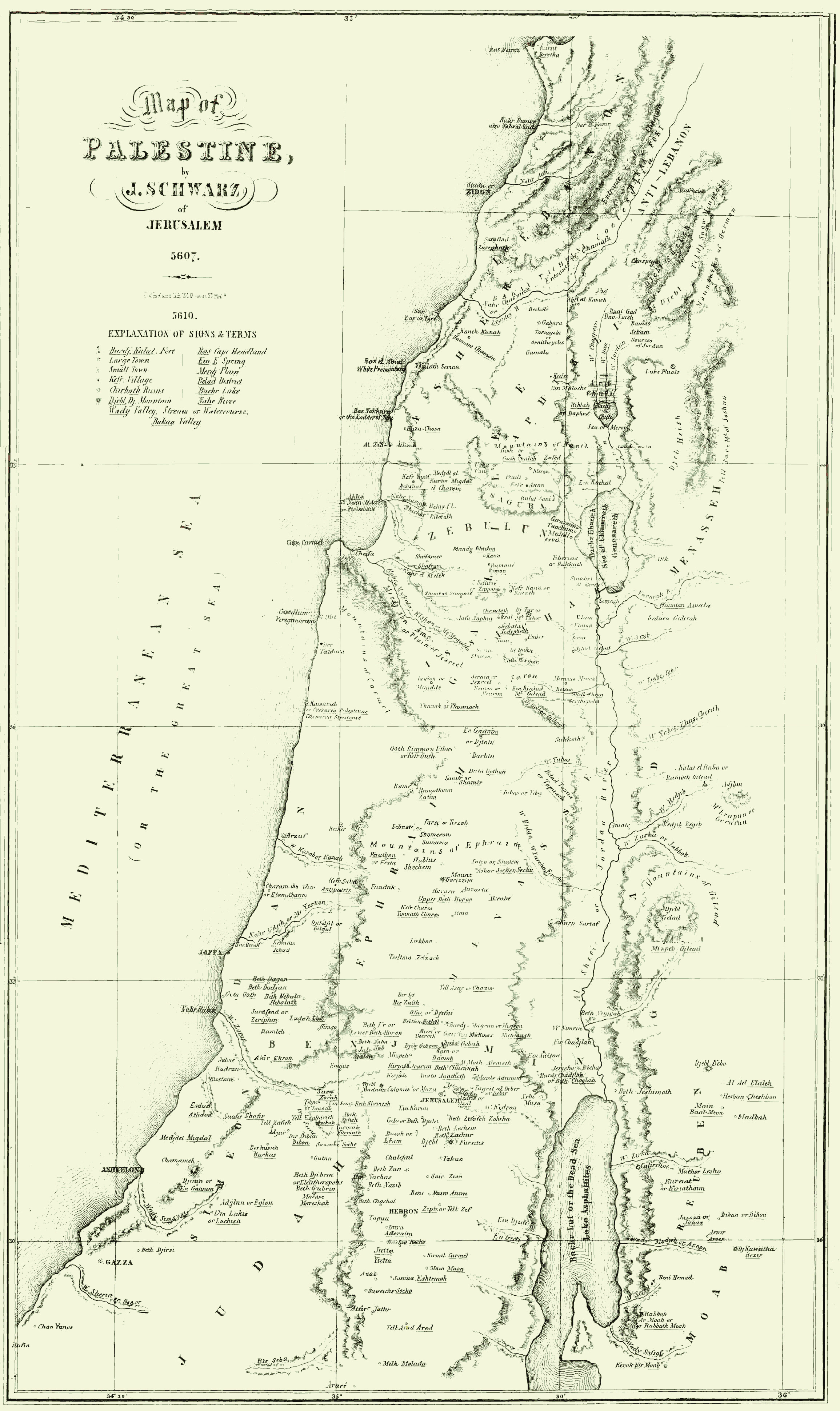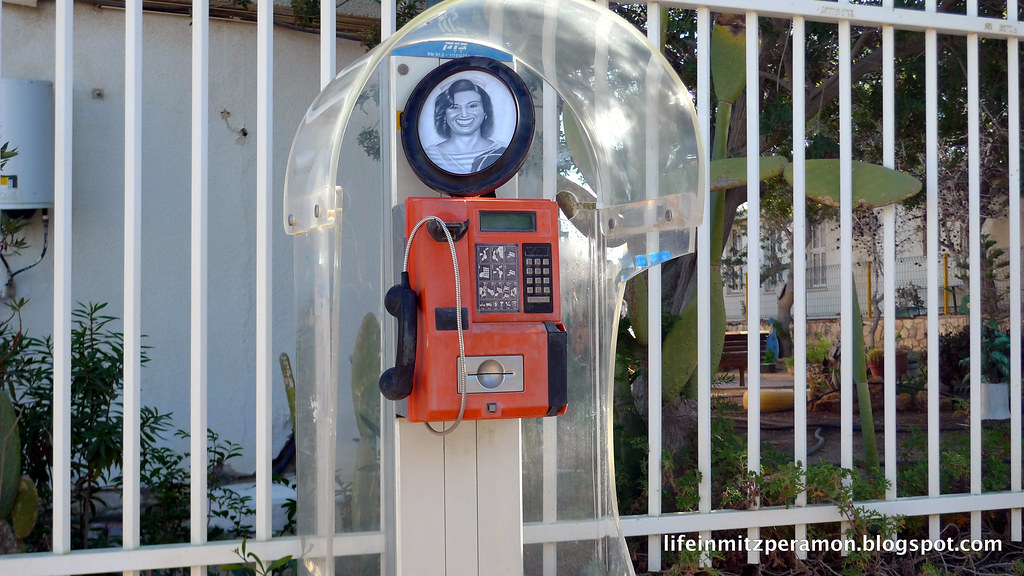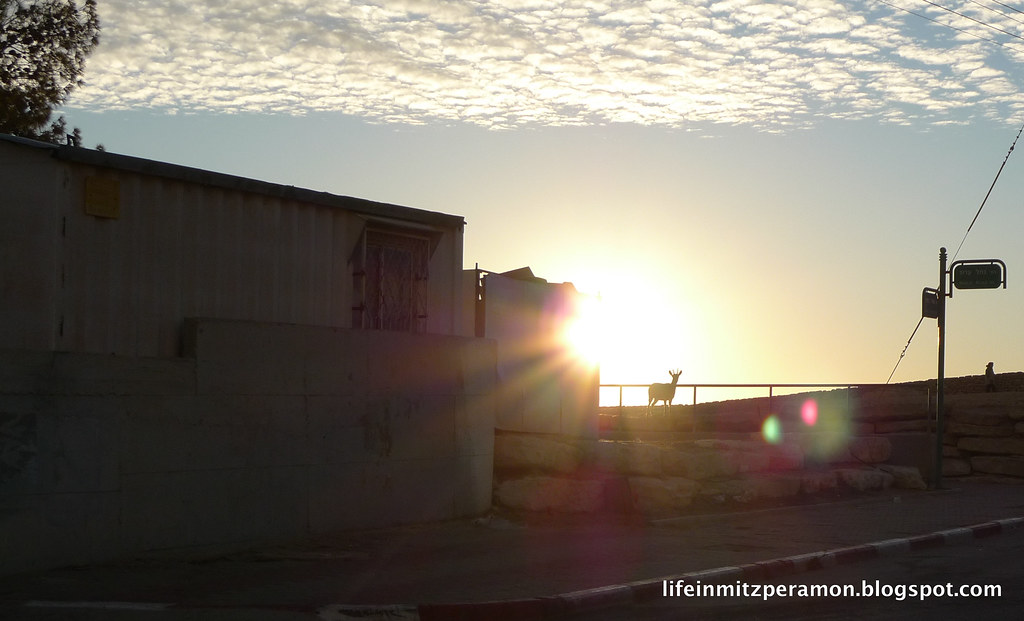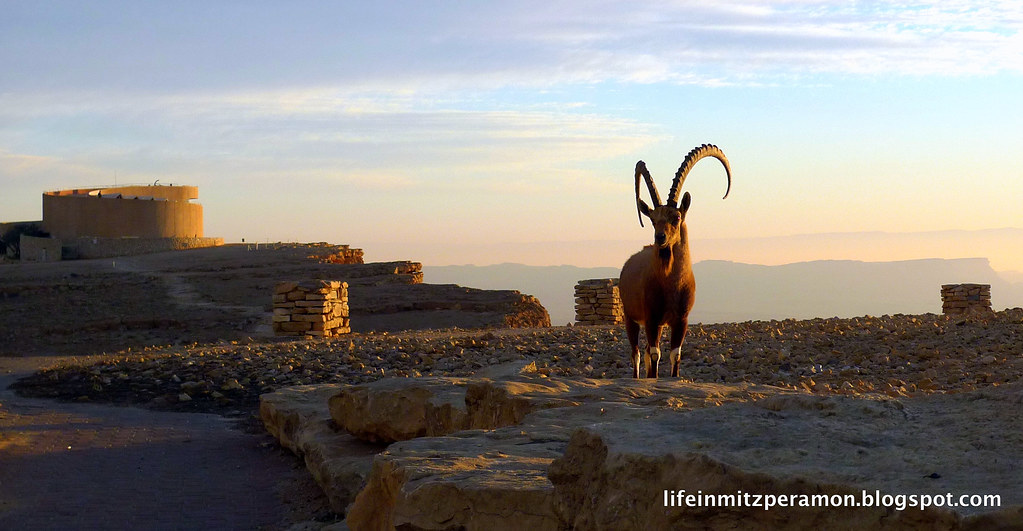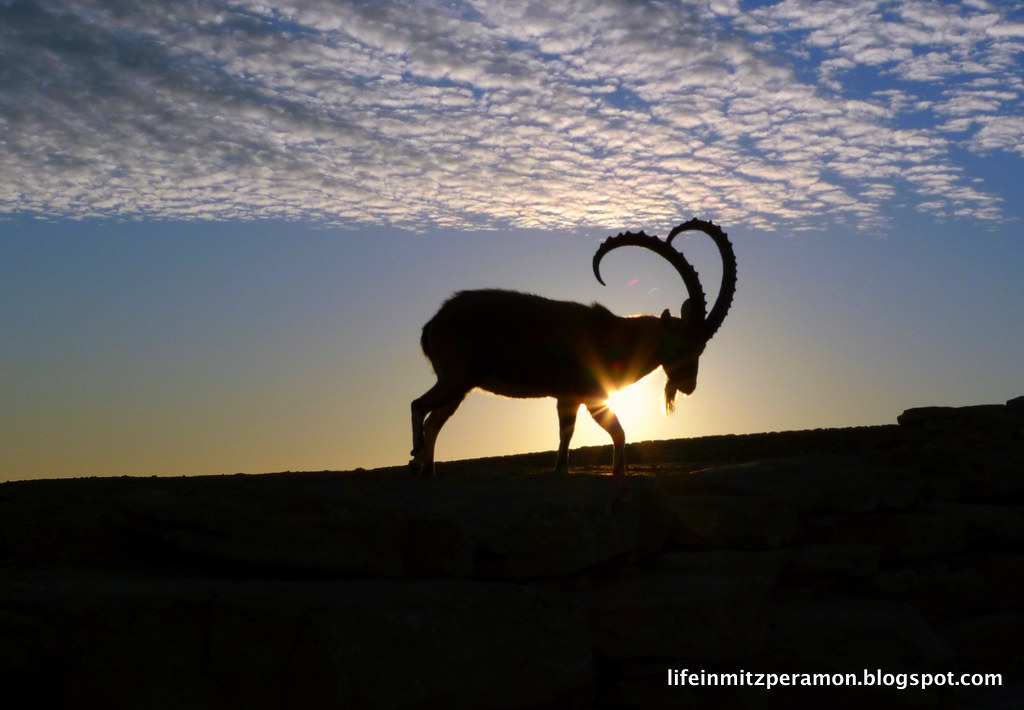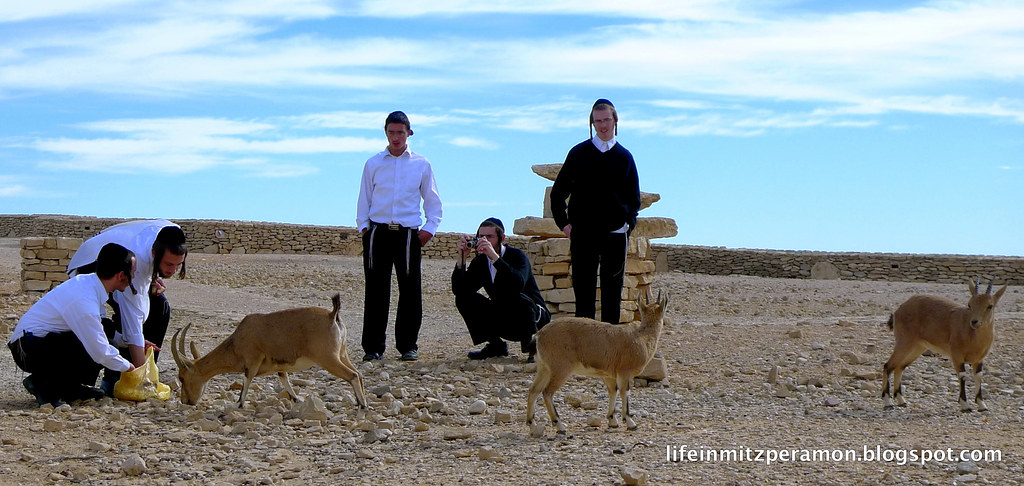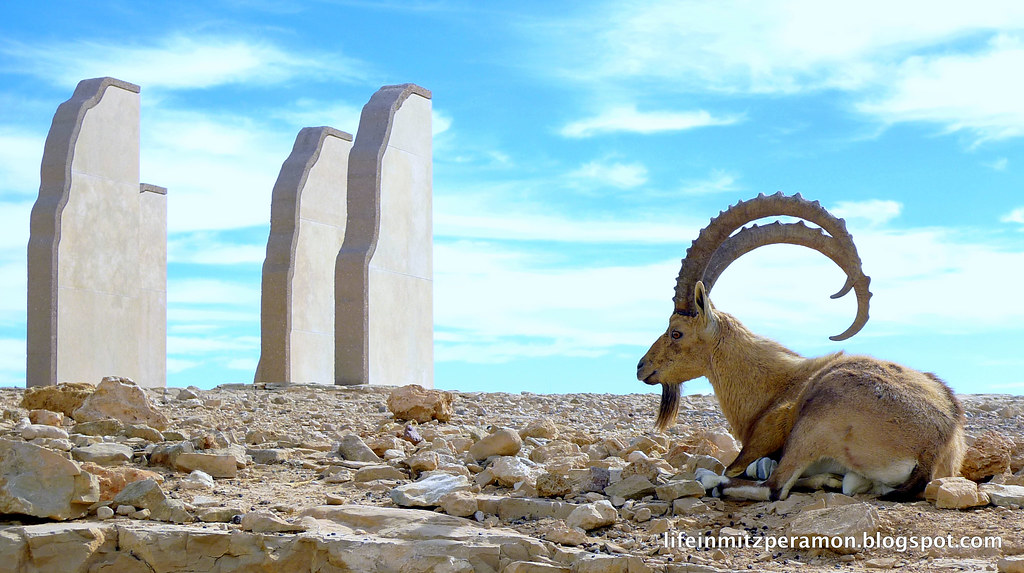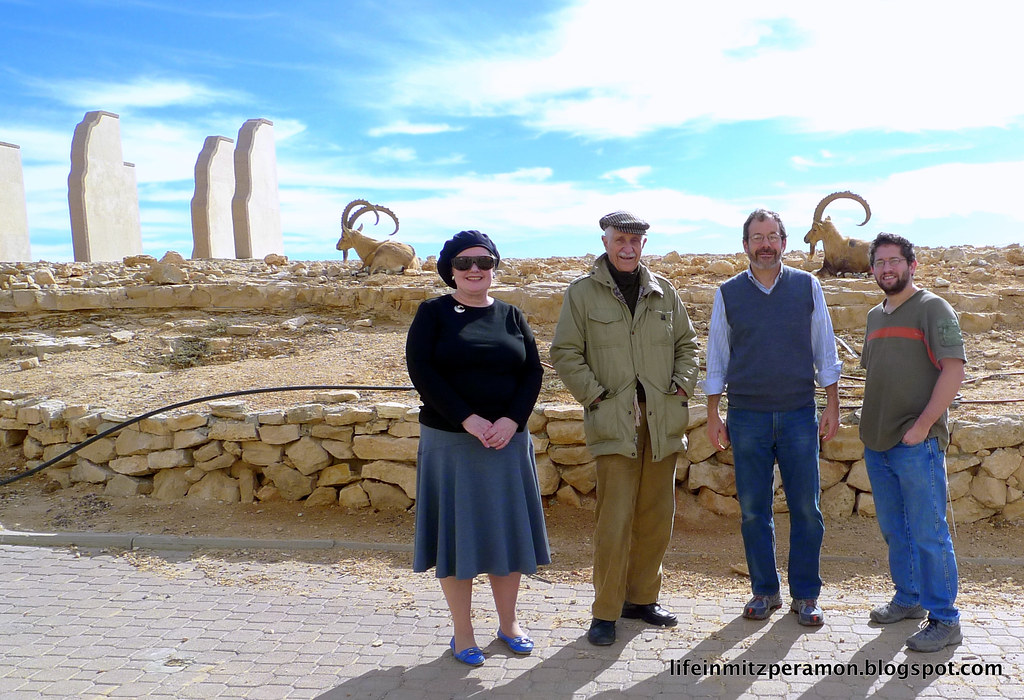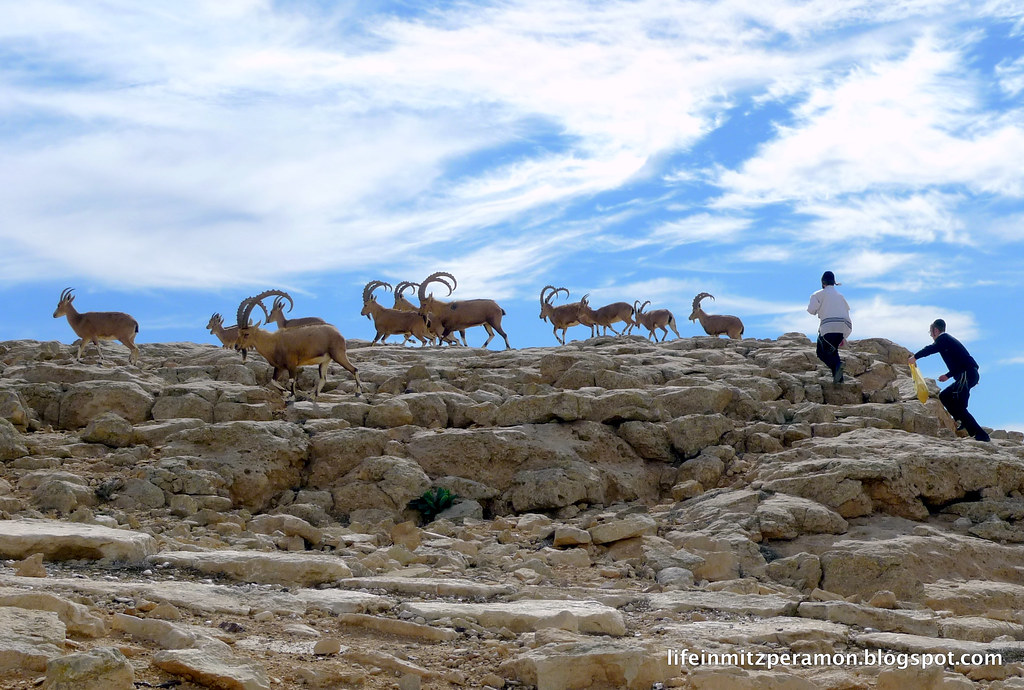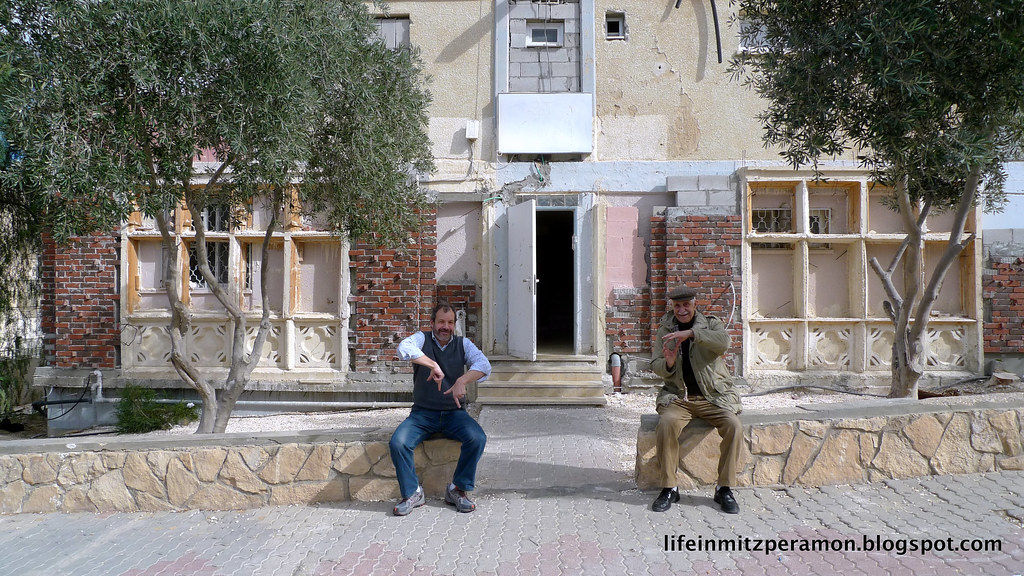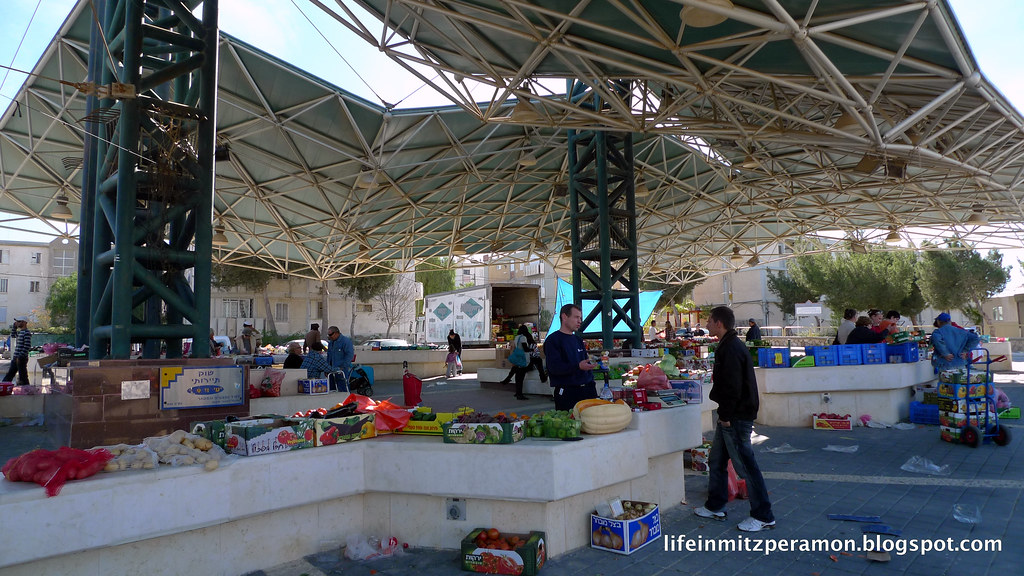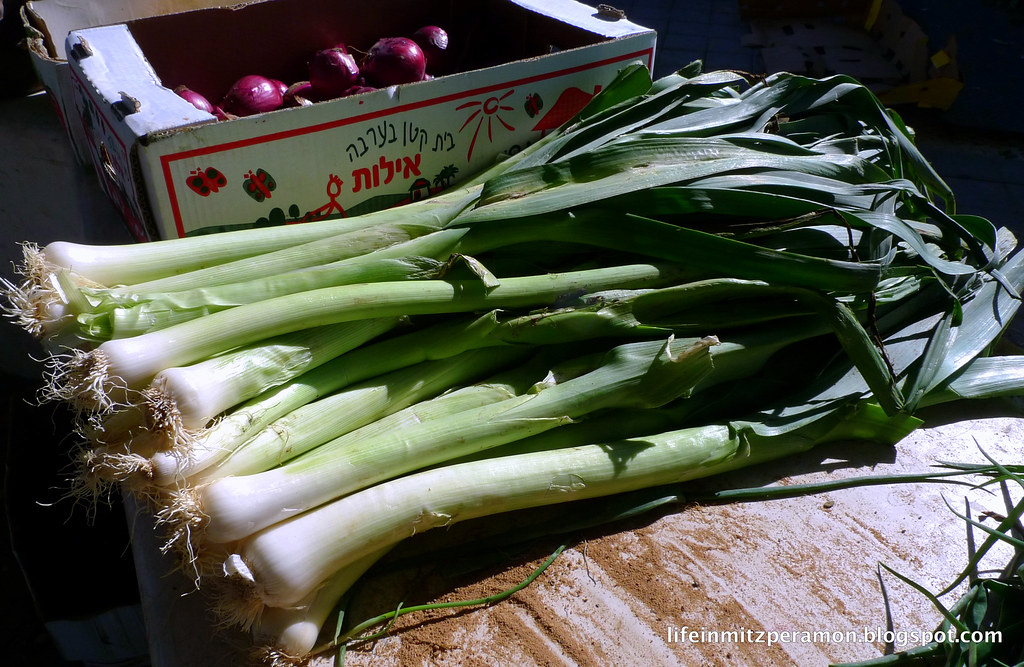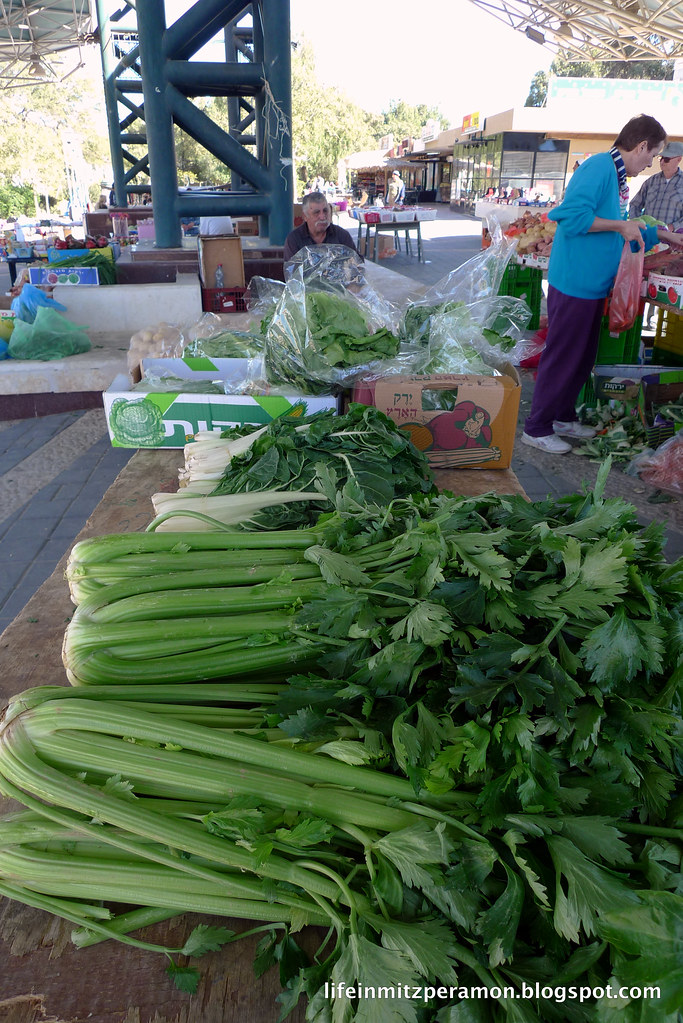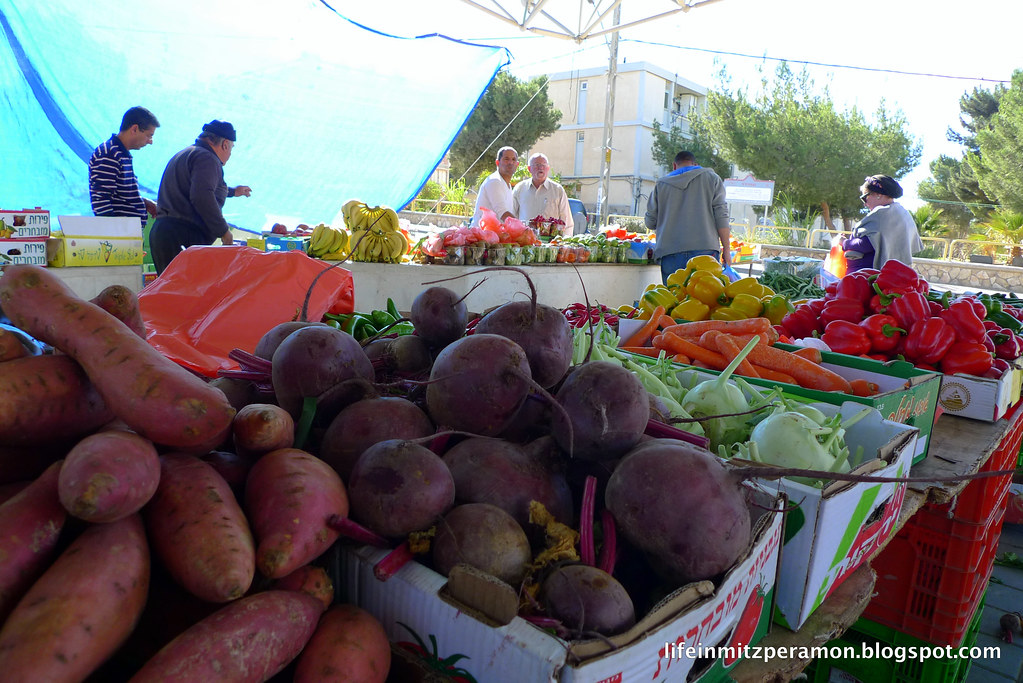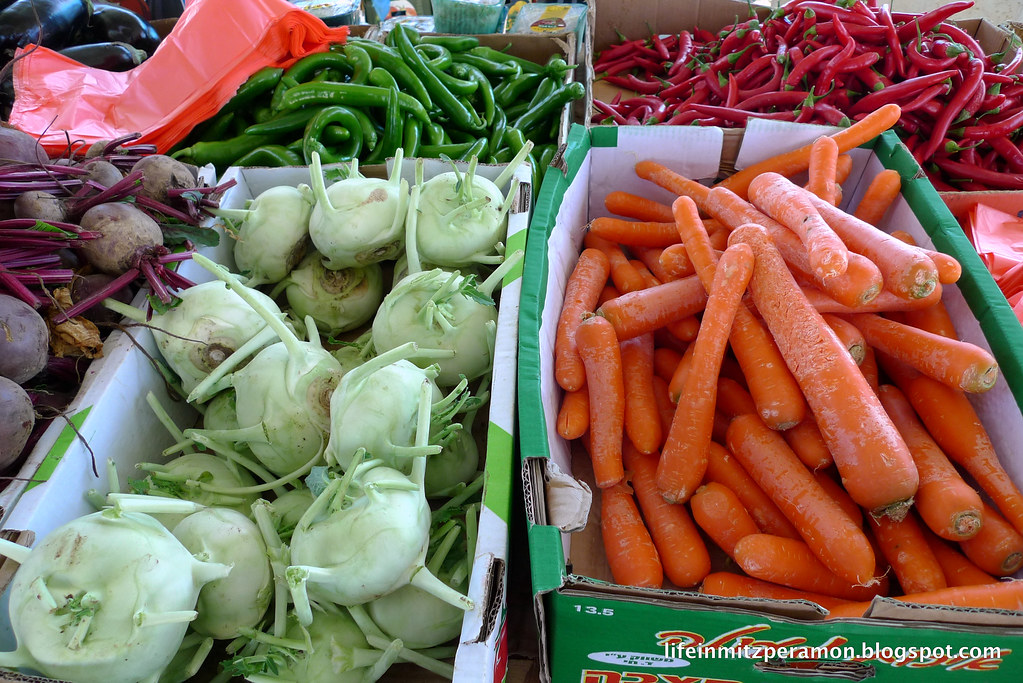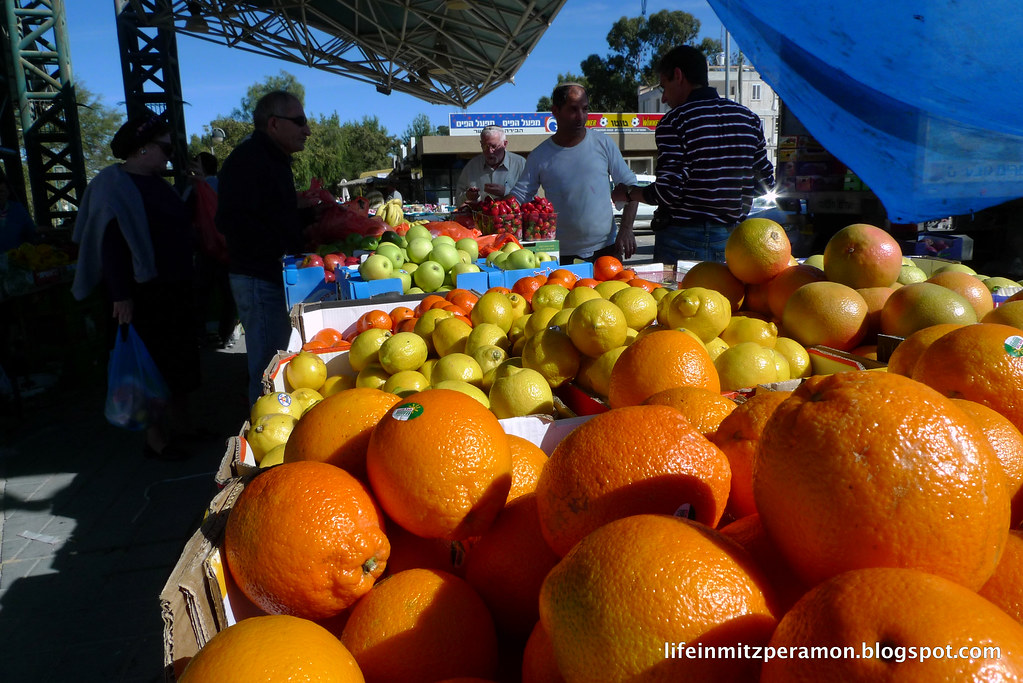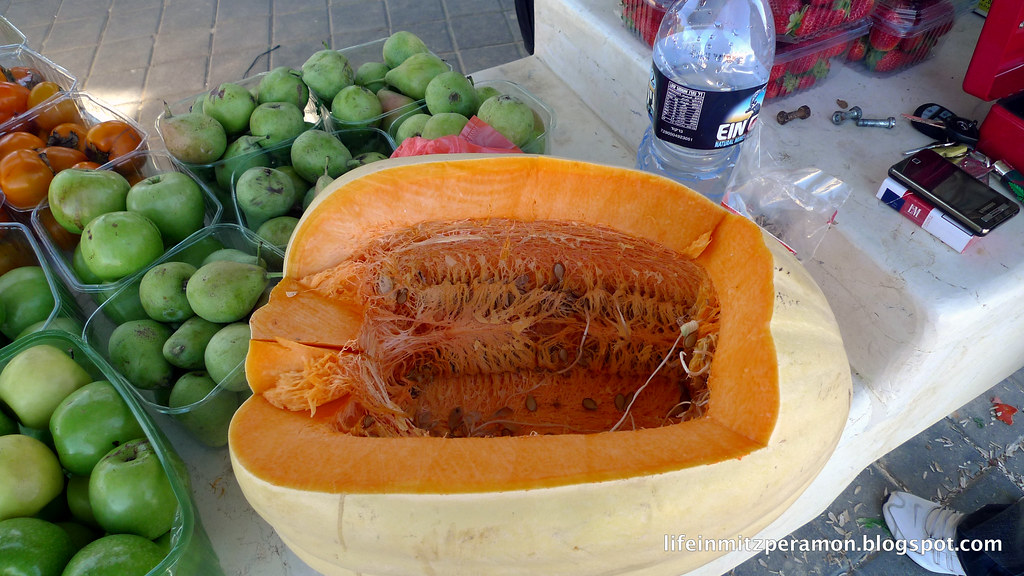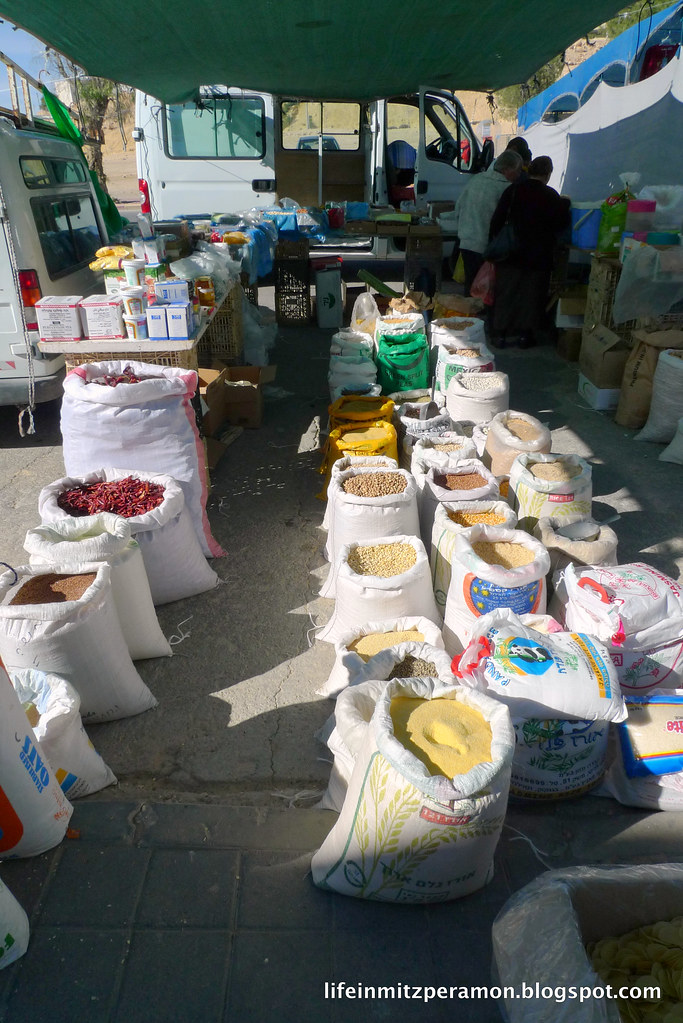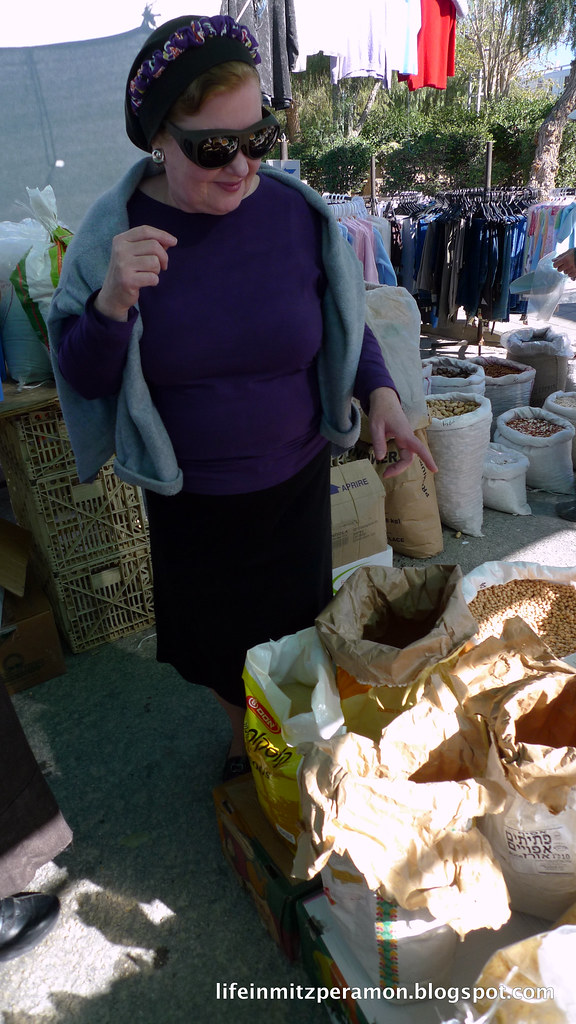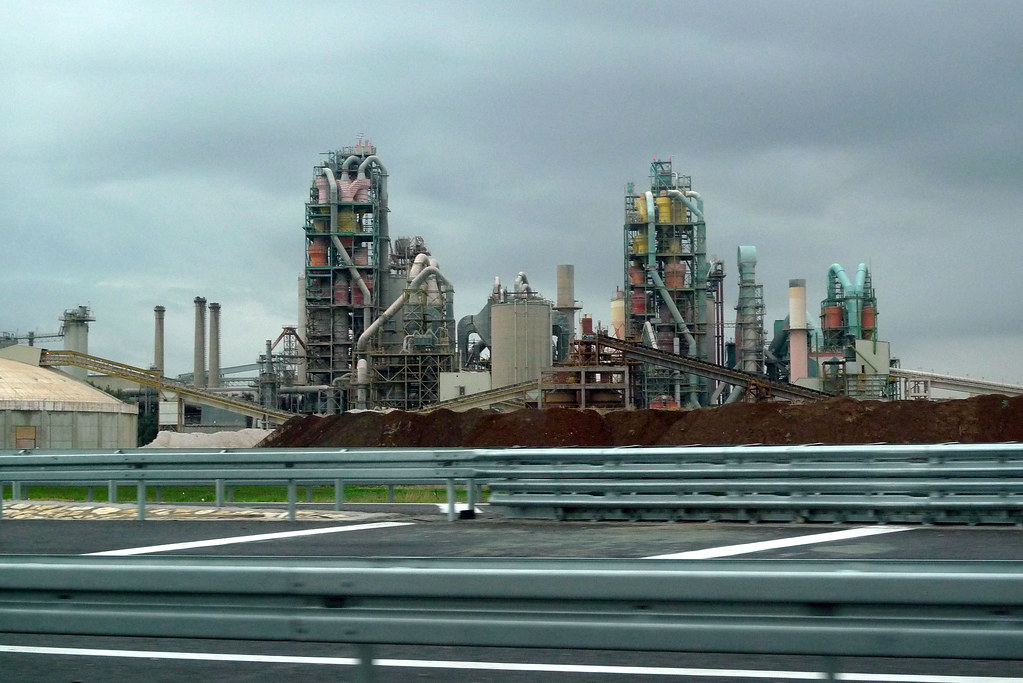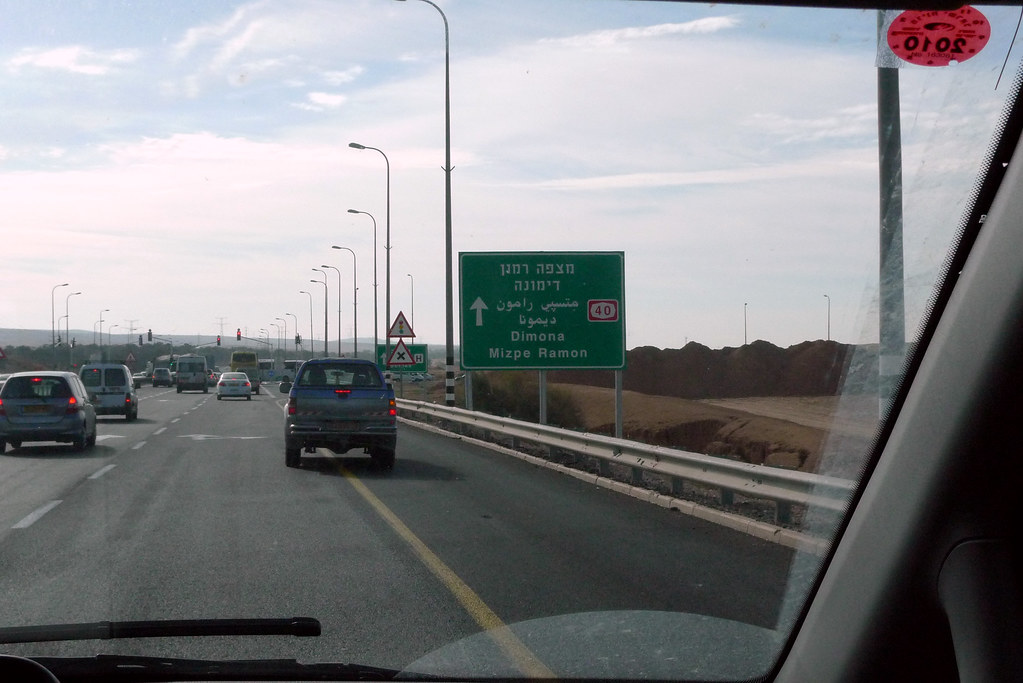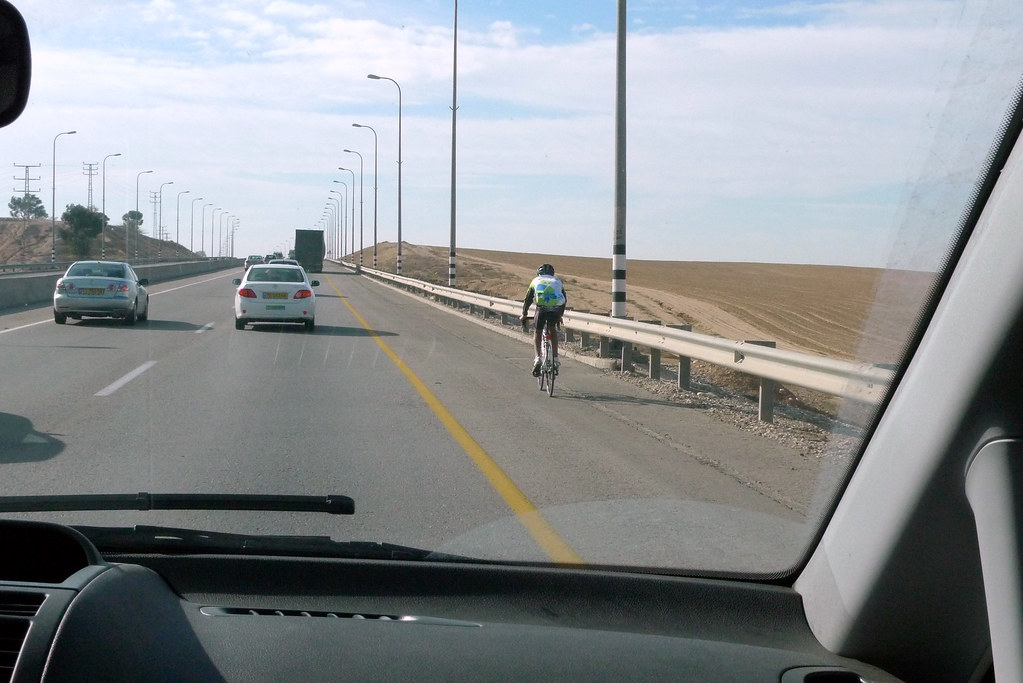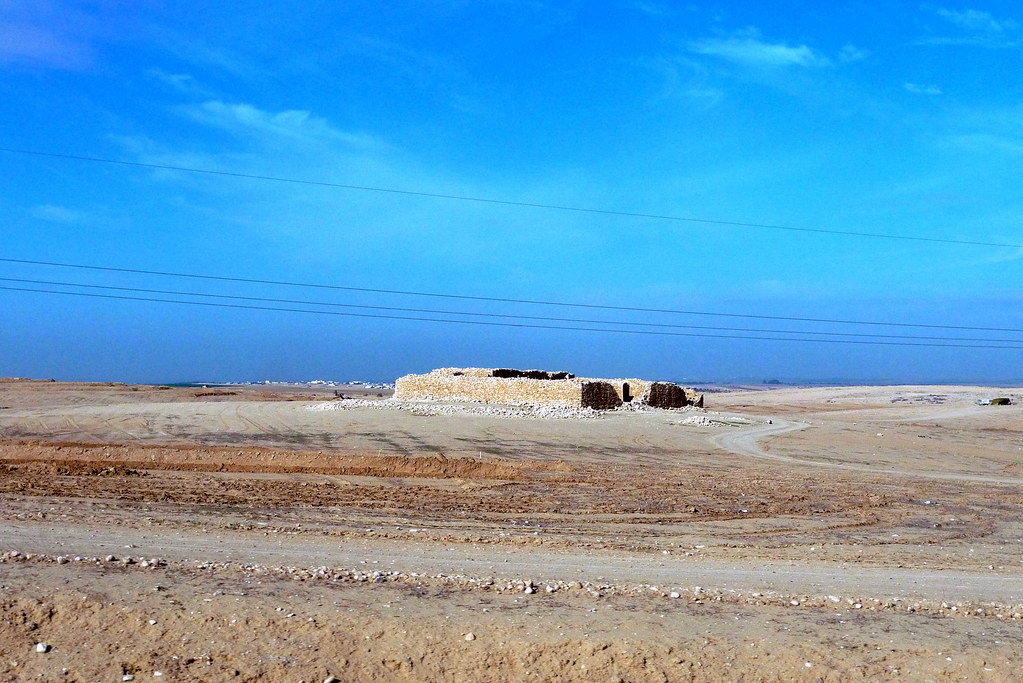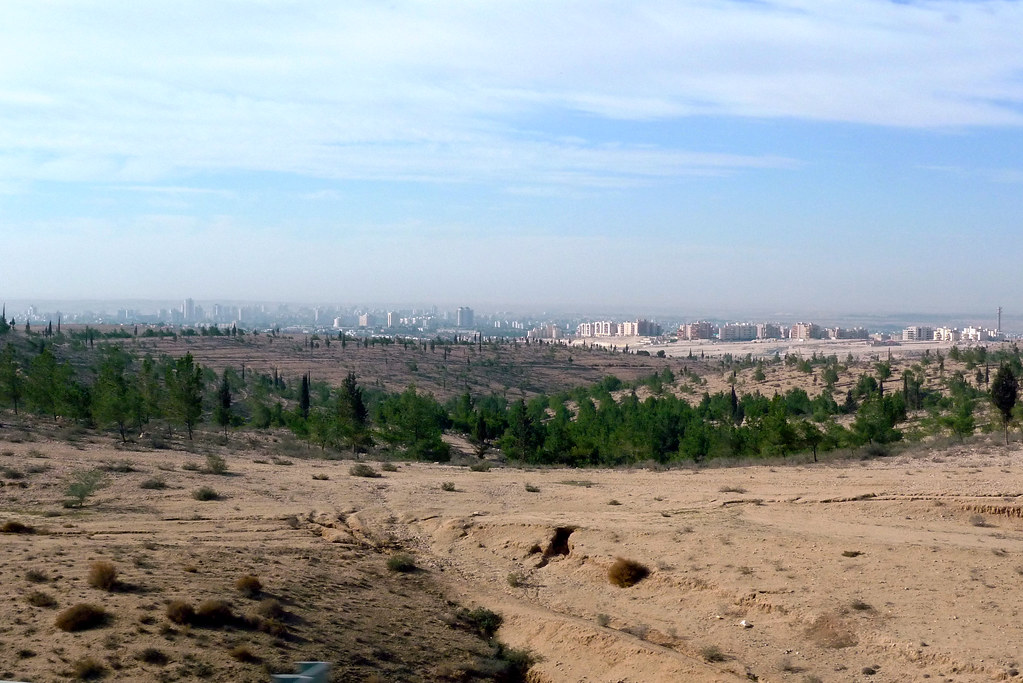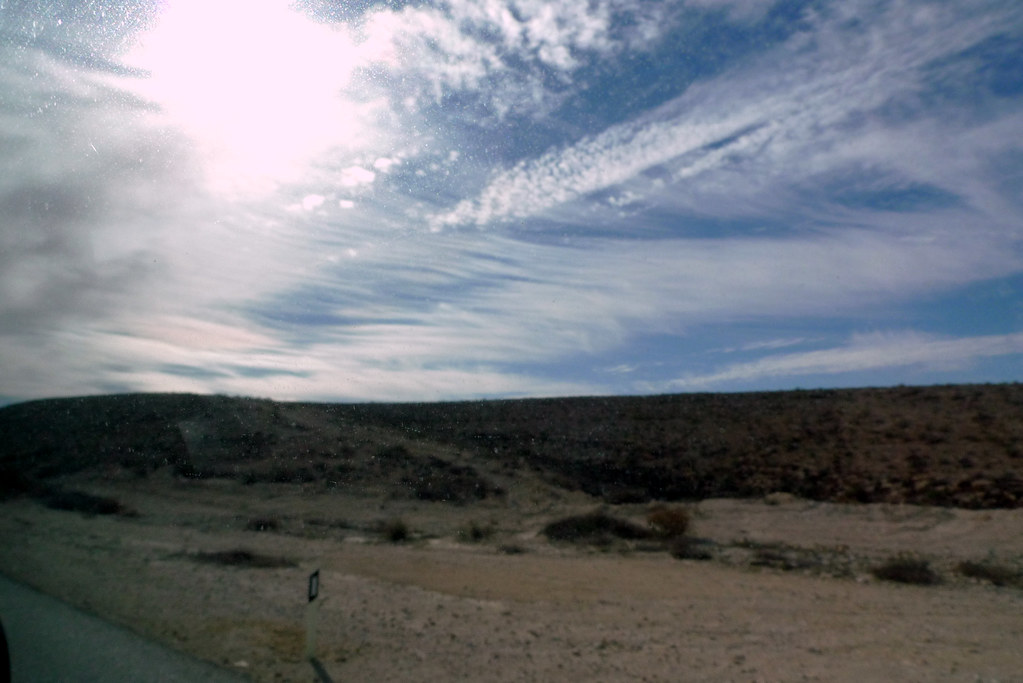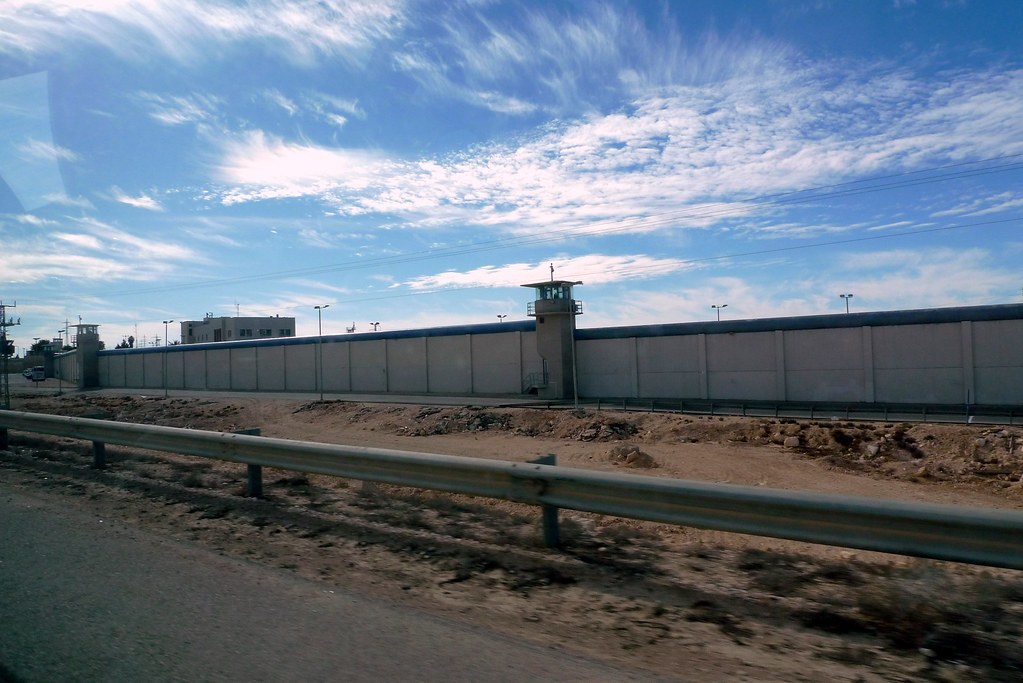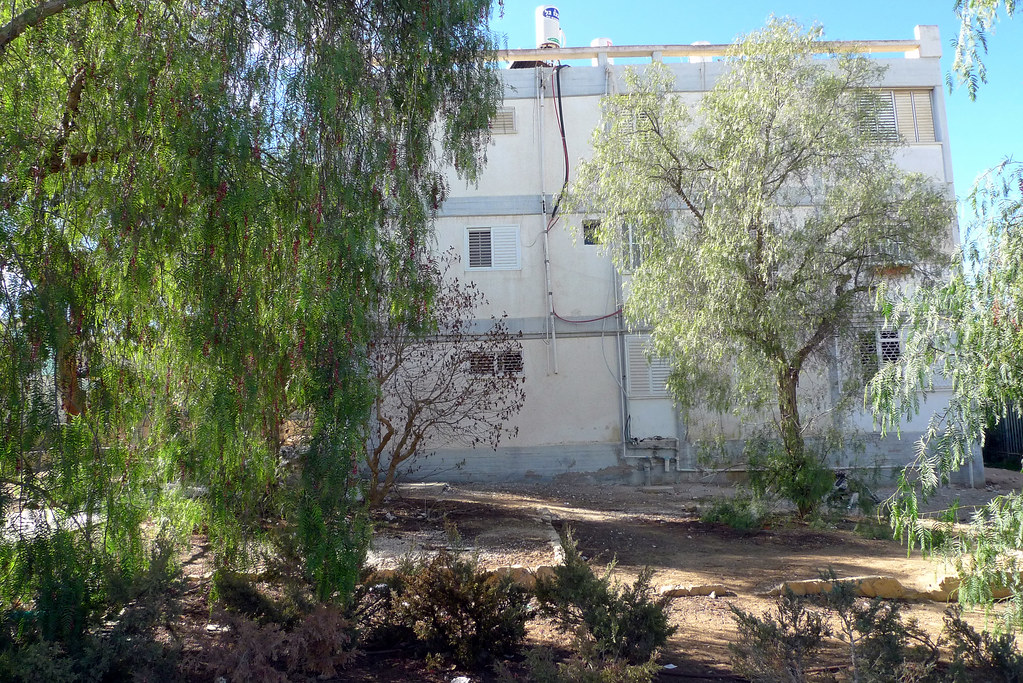I wish I could say we entertained the Finkels, but their visit coincided with the 10th of Tevet, a fast on the Jewish calendar, so the most we could do was show them around. Mark was in Israel for a friend's son's Bar Mitzvah. Mark is the kind of guy who will drop everything to attend a friend's simcha, and he was in Israel for just a short time for that. Uncle Rafi is one of the unsung heroes of the Jewish State. He came to Israel in 1948, after lying to get in to the Marines during WWII (he was under-age), "because of what happened to the Jews in Germany." He has been involved in many of the road building projects in Israel and can tell you just about everything that has happened here from personal experience.
Our first stop was at the little neighborhood shul at the crater's rim. It is divded into an Askenazic side and a Sephardic side. Since most of the residents of Mitzpe Ramon are Sephardim, it is by far the best attened in the neighborhood.
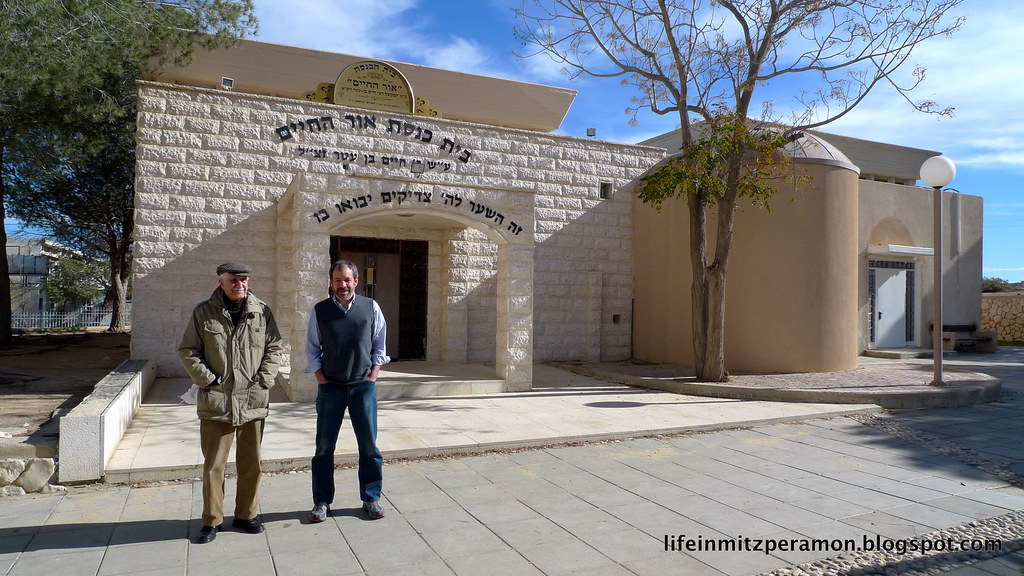 Uncle Rafi and Mark stand in front of our neighborhood shul in Mitzpe Ramon
Uncle Rafi and Mark stand in front of our neighborhood shul in Mitzpe Ramon
The ark of the Sephardic shul is carved olive wood, and chandaliers hang in the traditional Sephardic style from a pyramidal roof.
Mark in the Sephardic half of our neighborhood shul
The Askenazic side of the shul has an ark made of beaten copper, reminiscent of the copper cladding on the alter in the Temple reminding the people of Korach's sin of disputing the Kahunah. A giant, round metal chandalier hangs from the center of the pyramidal roof. When the rising sun shines through the eastern windows in the morning it were as if the glory of G-d filled the room.

A copper-clad ark graces the front of the Ashkenazic shul in Mitzpe Ramon
We next made our way to the eerie that overlooks Ramon's Crater, a spectacular 650 feet below.

The eerie overlooking Ramon's Crater, 650 feet below
We were fortunate to happen onto a herd of about 20 Ibex kids and mature Ibex by the crater rim. I believe this was a mixed herd of kids, females, and males, an oddity since the males and females usually group separately, except during breeding season in the fall.
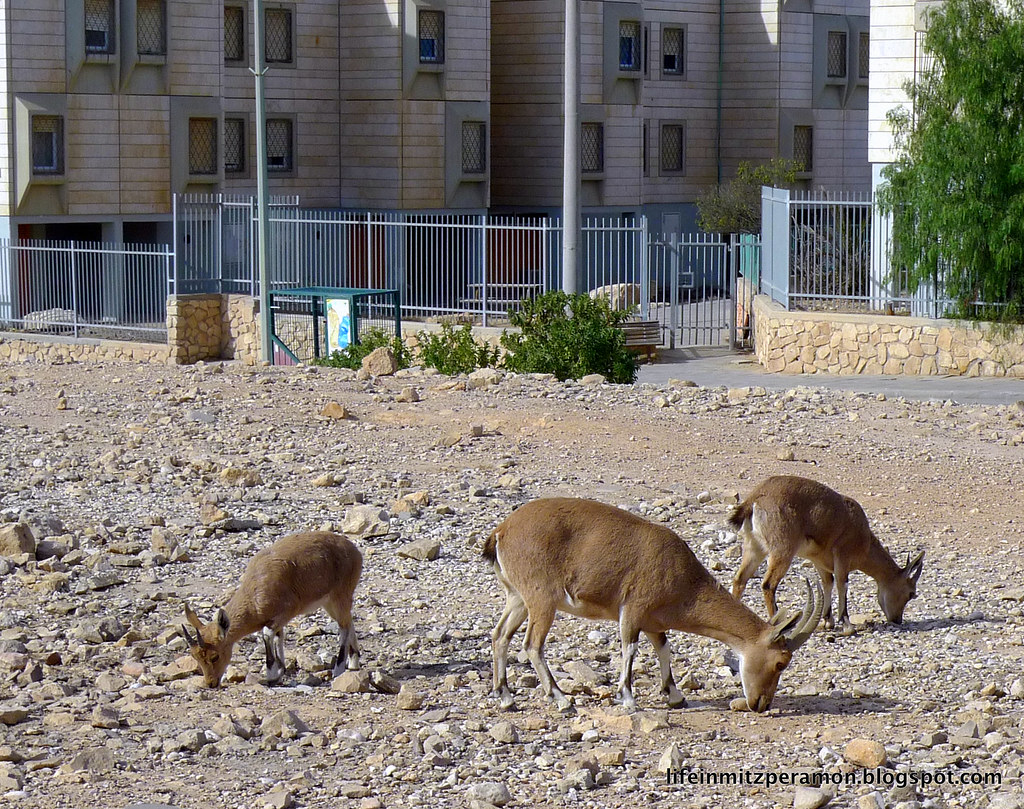
Ibex kids grazing on seemingly nothing
Shortly after, a group of yeshiva students arrived to feed the kids bread.
Yeshiva boys feed the young Ibex
Bochrim feed the kids (double-click to watch full-frame)
As we walked along we saw some magnificent young Ibex.

A magnificent young male Ibex at the rim of Machtesh Ramon
Public displays of art are common in Israel. Here a male Ibex looks like he is part of his own 2001 Space Odyssey:
2010: A Space Odyssey in Mitzpe Ramon - an Ibex discovers tools
This Ibex looks like he has been injured, perhaps by a predator. Ibex use their horns for protection, but also for mating fights. It is rare for an Ibex to be injured in a mating fight, although their horns are heavy and fierce.
A male Ibex displaying the scar of an old wound
Pam, Uncle Rafi, Mark, and Donny with Ibex and Space Odyssey Rocks of Mitzpe Ramon
Herd of young Ibex by the crater rim at Mitzpe Ramon
Of course, eventually the young boys do what all young boys do, chase the Ibex and stampede the herd off.
Yeshiva bochers stampede the herd of young Ibex
Eventually we come 'round to the Chabad House in Mitzpe Ramon. Here Mark and Uncle Rafi try to make some semblance of a "770" sign, sitting in front of the Chabad House.
Mark and Uncle Rafi make the sign of "770" in front of Mitzpe Ramon's Chabad House
Finally it was time to say good-bye. Mark and Uncle Rafi kindly gave us a ride to Be'er Sheva, where we picked up a rental car for the next of our round of activities. Thanks Mark and Uncle Rafi. L'hitraot!
See you again soon, Mark!



